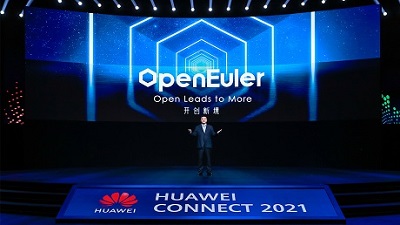|
The internet connectivity on older tech devices and smart gadgets could stop working on Thursday after a key digital certificate required to access websites safely expires. Let's Encrypt, a nonprofit organization that is the largest issuer of digital certificates — which encrypts and protects the connection between devices and websites on the internet — will be forced to expire one of its most popular digital certificates, the IdentTrust DST Root CA X3, on Sept. 30. This means several phones, computers, video game consoles, smart gadgets, and "Internet of Things" devices bought before 2017 that use the Let’s Encrypt digital certificate in question, and haven't updated their software since then, could face significant issues connecting to the internet. The problem will primarily affect popular devices, such as iPhones running iOS 9 and below, Android phones running below the 2.3.6 software, Windows computers running software prior to XP SP3, Sony's PS3, and PS4 game consoles, and the Nintendo 3DS. “Certain older devices from 2016 and before and any gadget that has the word ‘smart’ in it that requires internet connectivity, like certain TVs, bulbs, fridges, and home control apps, could be affected by this certificate expiry,” said security researcher and cybersecurity expert Scott Helme. “It’s not clear how big of a problem this will be, but something somewhere will certainly break. There will be a bunch of fires tomorrow, and we’ll just have to put them out." This problem has flown under the radar of many manufacturers, including Big Tech companies Apple, Google, Sony, and Microsoft — none of which have made announcements to customers about potential issues, Helme said. He added this is one of the first major digital certificates to expire since the advent of the internet in the 1980s. Therefore, there is no precedent for how to solve the problem besides updating the software on devices. “There have been no squeaky wheels, so no one has ever oiled it. It’s a brand-new problem,” Helme said. Planned obsolescence, which makes tech devices stop working properly after a certain number of years, is part of the reason such problems occur. Many tech companies, such as Apple, do not promise users a smooth experience for customers after they have owned a device for several years. “Some companies have been proactive about educating customers about this problem, and some companies got lazy and didn’t do their homework and expect customers to figure it out on their own if issues start occurring on older devices,” said Leonard Grove, CEO of SSL.com, a well-known private commercial provider of digital certificates. Although there is a significant risk of millions of devices not working on Thursday, some internet security experts say it could affect every device in a different fashion. “We just don’t know what exactly will happen, it could be like Y2K in 2000 with a big warning and nothing happens, or you could see a lot of people rushing to fix their devices or getting new ones,” Grove added. Follow this thread on OUR FORUM. Chinese tech giant Huawei launched openEuler operating system (OS) on Saturday, another self-developed OS after the HarmonyOS, as it tries to "solve the domestic stranglehold problem of lacking its homegrown OS in basic technology," and build a full-scenario covered ecosystem to prepare for more US bans. The openEuler OS can be widely deployed in various forms of equipment such as servers, cloud computing, and edge computing. Its application scenarios cover Information Technology, Communication Technology, and Operational Technology to achieve unifying an operating system with multi-device support, according to the company's introduction. In the ICT field, Huawei provides products and solutions such as servers, storage, cloud services, edge computing, base stations, routers, industrial control among others, all of which need to be equipped with an OS. Huawei has therefore been building capabilities to achieve a unified OS architecture, and meet the demands of different application scenarios, the firm said on Saturday. The openEuler program was initially announced back in 2019 as an open-source operating system. Today's launch is an updated one. Huawei also disclosed that openEuler and HarmonyOS have realized core technology sharing, expecting that "openEuler + HarmonyOS" can jointly serve "the entire digital scene." Huawei will focus on HarmonyOS and openEuler at the same time. Both will also be open-source, in an effort to solve the domestic stranglehold problem of lacking a homegrown OS for basic technology, Huawei's rotating chairman Eric Xu Zhijun told reporters at a roundtable interview on Friday. Xu introduced that while Harmony is used in smart terminals, IoT terminals, and industrial terminals, openEuler will be used in servers, edge computing, and cloud infrastructure. The two operating systems can cover various scenarios to solve the current situation of a lack of operating systems in China. The openEuler OS mainly targets enterprise customers rather than consumers. To reach more enterprises, it still has a long way to go; therefore, Huawei may firstly apply it to its own products, Xiang Ligang, a veteran industry analyst and a close follower of Huawei, told the Global Times on Saturday. "Most firms are still using Windows OS or UNIX, and Huawei may want to compete with them in this area," Xiang said. The openEuler's positioning is to construct the ecological base of the national digital infrastructure and to undertake the historical mission of supporting the construction of a leading, reliable, and secure digital foundation for China, Huawei's founder, and CEO Ren Zhengfei said in an internal talk with company research staff last week. Harmony and openEuler still have a long way to go, Ren said, noting that Harmony has already "begun to move forward, and we still have anxious expectations for it." Meanwhile, openEuler is also making great strides. Since its official launch on June 2, HarmonyOS 2.0 reached another milestone on Thursday: 120 million devices, which formerly ran Google's Android, have been updated to the in-house OS, making it the OS to reach that figure in the shortest amount of time. Huawei's latest move to build its own OS is also part of the Chinese tech giant's efforts to transform from a hardware maker to a software provider as hardware businesses, especially smartphone makers, are seeing increasing barriers due to the US chip ban. "The transformation process is painful since it's a transformation of the business model. But the good news is that we have gradually changed over," Xu said, The senior executive said the US chip cut still poses great challenges for its smartphone businesses, making its 5G handsets unavailable in the market right now, but "we will strive to keep our smartphone businesses afloat, and will not sell the unit for sure." Besides the two OSs, Huawei also laid out an ambitious blueprint for the future digitalization era during its ongoing annual flagship industry event, Huawei Connect 2021. The company's plan ranges from artificial intelligence (AI) to cloud businesses, and it vowed to use its ICT capabilities to empower the transformation of a wide range of industries from finance, mining to the medical field. Further details can be found on OUR FORUM. Mark Zuckerberg, Facebook Last month, the CEO approved a new initiative, codenamed Project Amplify. The effort, which hatched at an internal meeting in January, had a specific purpose. Use Facebook’s news feed, the site’s most important digital real estate, to tell people a positive story about social networks. According to three people who knew about this effort, pushing Facebook-backed news items (some of which were created by the company) would improve the image of the user’s eyes. However, the move was sensitive because Facebook hadn’t previously positioned the news feed as a place to hone its reputation. One attendee said some executives at the meeting were shocked by the proposal. Project Amplify has suspended a series of decisions Facebook made this year to actively reshape its image. Since its January meeting, the company has embarked on a multifaceted effort to change the story by distance. Zuckerberg From scandals, reduce outsiders’ access to internal data, fill in potentially negative reports about the content, and increase your own ads to showcase the brand. This move will lead to a major shift in strategy. For years, Facebook has faced a crisis after a crisis over privacy, misinformation, and hate speech on the platform by publicly apologizing. Zuckerberg has been personally responsible for Russia’s intervention on the site during the 2016 presidential election and has loudly endorsed freedom of speech online. Facebook also promised transparency in how it operates. However, we do not forgive the beating of criticisms of various issues such as racist speech and false information on vaccines. Dissatisfied Facebook employees are angry at leaking internal documents in opposition to their employers. Last week, The Wall Street Journal published an article based on such a document showing that Facebook knows about much of the harm it causes. As a result, Facebook executives concluded that there was little way to calm criticism or gain support, and decided to continue the attack earlier this year, six people who did not reveal their identities for fear of retaliation. Current and former employees said. “They know they won’t come to their defense, so they have to do that and say for themselves,” said Katie Harbus, a former Facebook public policy director. Said. This change involves Facebook executives from marketing, communications, policy, and integrity teams. Alex Schultz, a 14-year company veteran who was appointed Chief Marketing Officer last year, has also influenced his efforts to reshape images, five people who worked with him said. But at least one of the decisions was driven by Zuckerberg and everything was approved by him, three people said. Facebook spokesman Joe Osborne denied the company changed its approach. “People deserve to know the steps we are taking to address the various issues our company faces — and we will share those steps widely,” he said. Said in a statement. For years, Facebook executives have been plagued by the appearance of their company undergoing more scrutiny than Google and Twitter, current and former employees said. They said Facebook was apologized and noted that it provided access to internal data. As a result, executives held a virtual meeting in January to break down more aggressive defense ideas, one attendee said. The group discussed using news feeds to promote positive news about the company and to place ads linked to favorable articles about Facebook. They also discussed how to define a professional Facebook story, the two participants said. In the same month, the communications team discussed ways to weaken executive reconciliation in responding to the crisis and decided to reduce apologies, two people familiar with the plan said. Zuckerberg, who was intertwined with policy issues, including the 2020 elections, also wanted to change his position as an innovator, people said. In January, the communications team distributed a document containing strategies to keep Zuckerberg away from the scandal. This is partly due to the focus on Facebook posts and media appearances on new products.Follow this thread on OUR FORUM. |
Latest Articles
|


